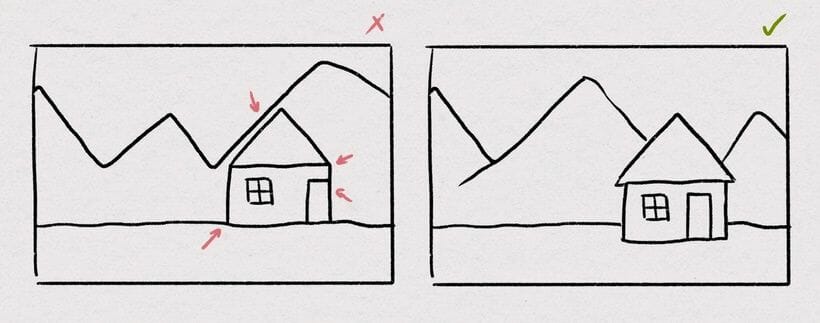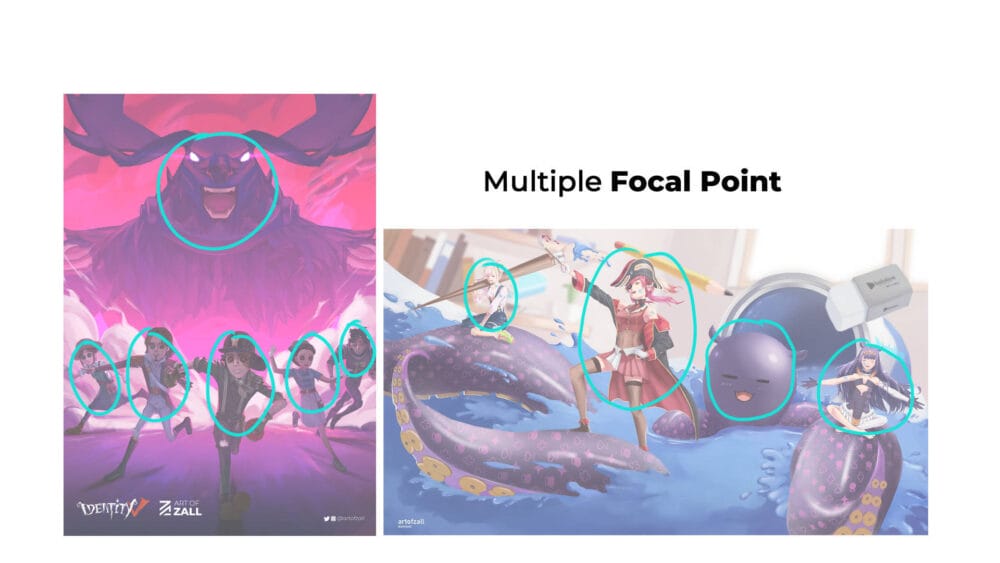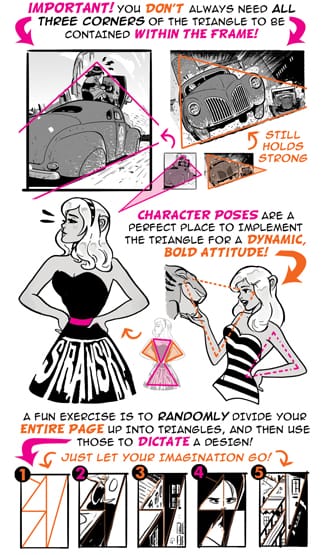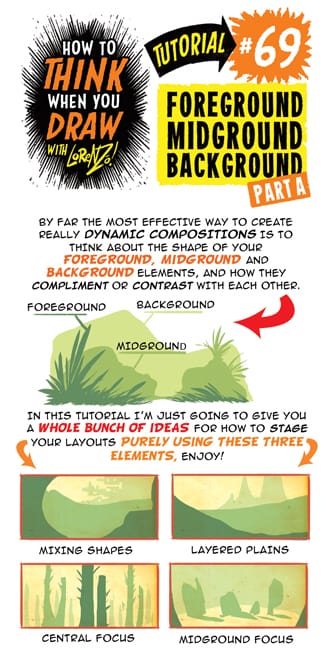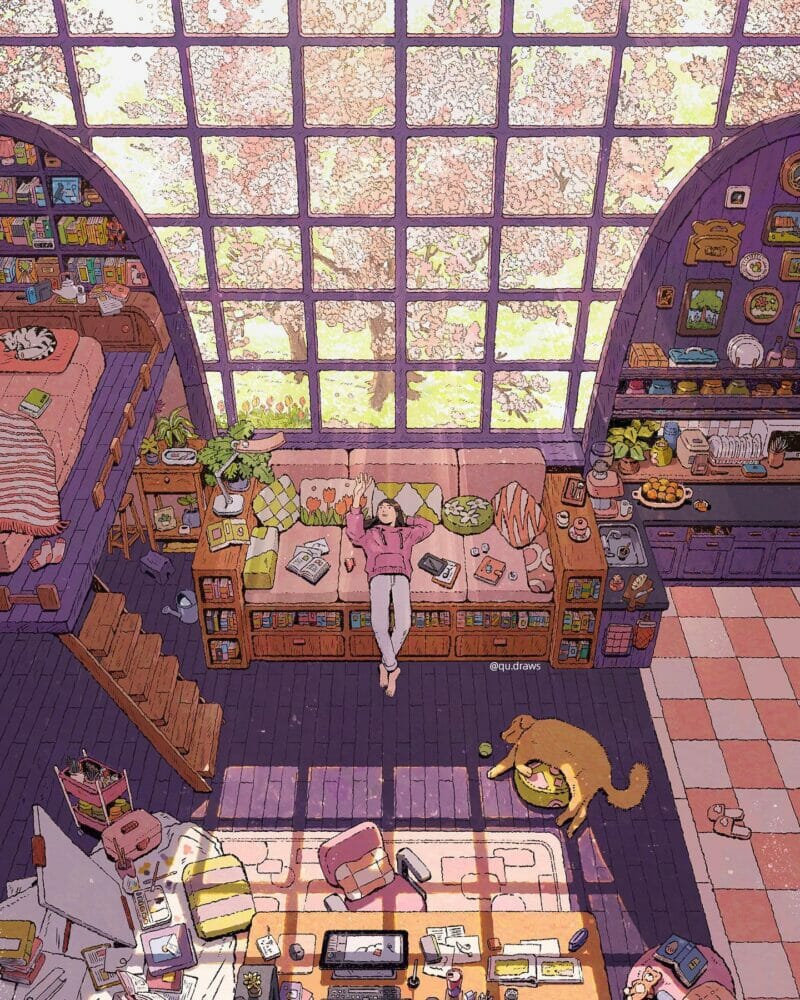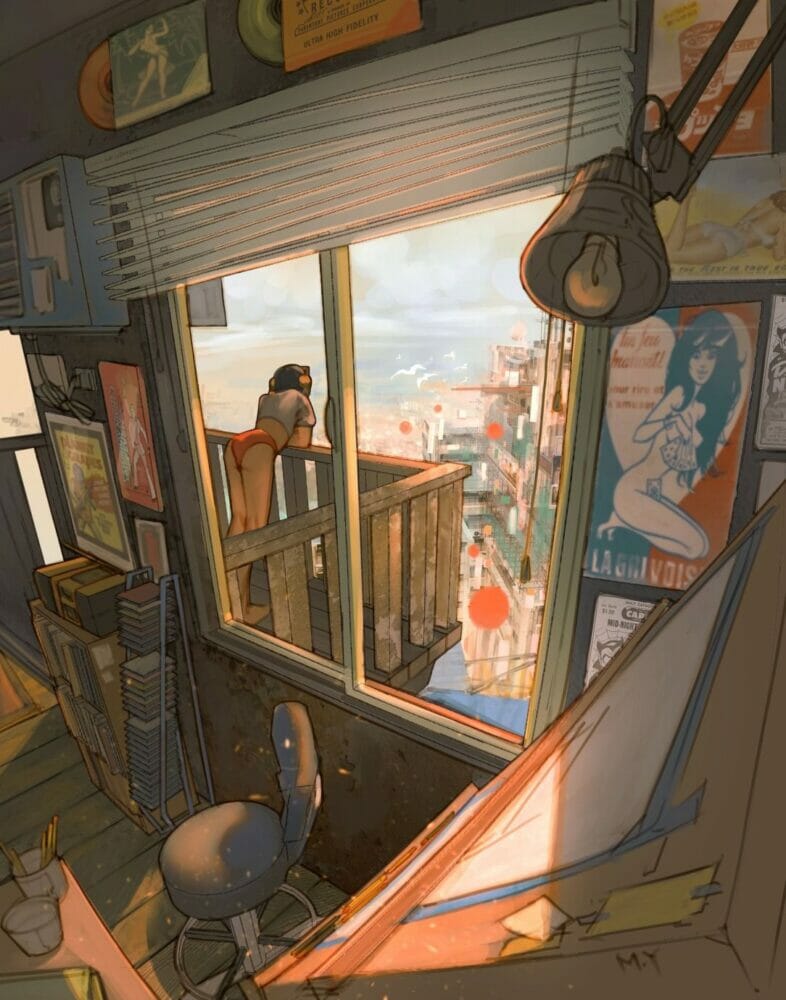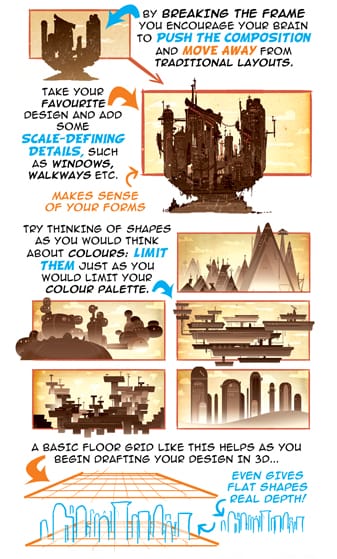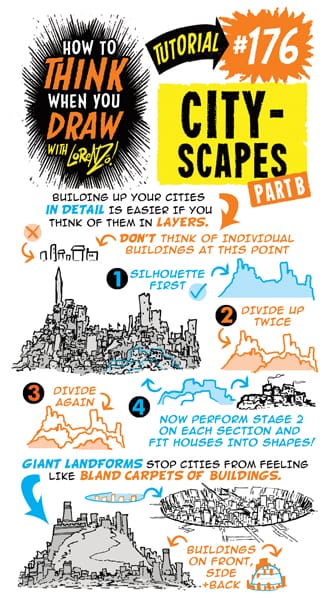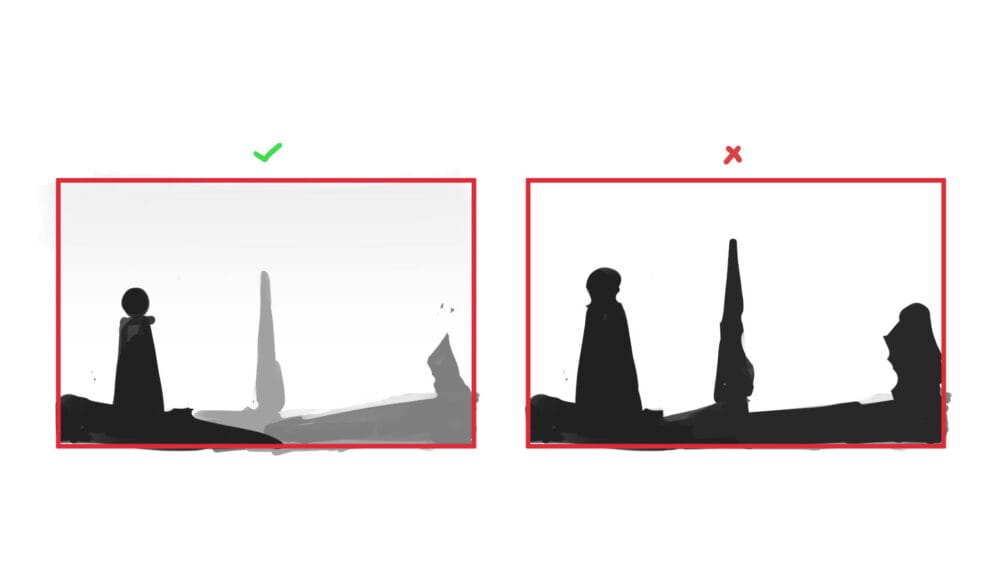Space can refer to the amount of space an artwork takes up as well as the space within a composition. A canvas, film shot, or stage can be broken down into spaces such as the foreground, background, left, middle, and right. Any area on a composition can be referred to as its own space as well, and artists use these spaces to create depth or place importance on a certain figure or show power or weakness in an interaction, etc.
The sections of a stage can be broken down this way in order to create a composition in theatre. Characters who are "down center" are closer to the audience and in the center of the stage. This emphasizes the character, giving them attention in an important moment for their character.


